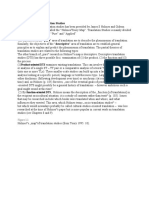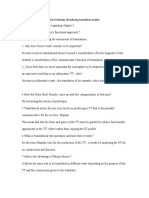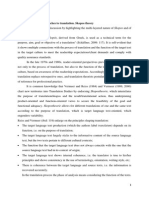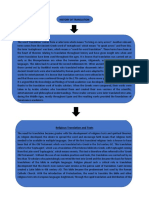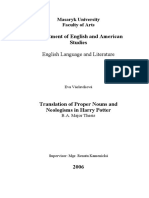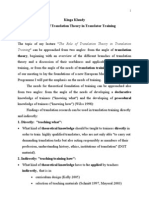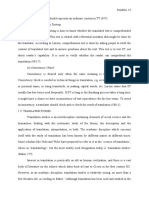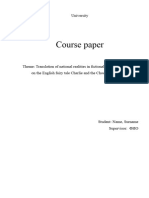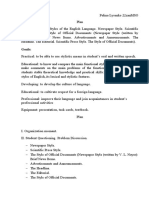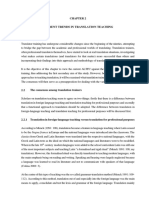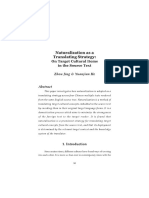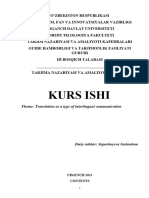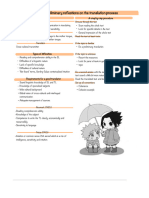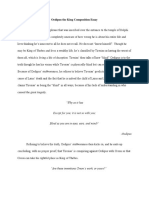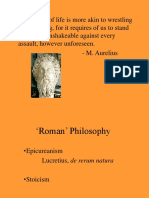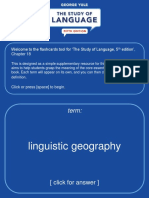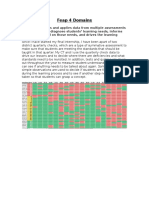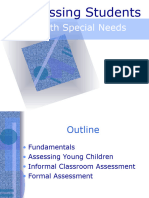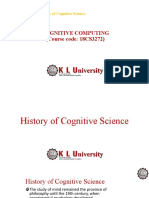100% found this document useful (1 vote)
303 views39 pagesTranslation Theory
This document provides an overview of translation studies. It discusses various models and concepts in the field, including:
- Translation can be product-oriented, focusing on the final text, function-oriented examining context/purpose, or process-oriented analyzing the psychology of translation.
- Translation studies examines restrictions such as medium, language area, text rank/type, time period, and specific problems.
- Early translation theorists like Cicero, Jerome, and scholars involved in translating Buddhist texts debated literal vs. free translation and word-for-word vs. sense-for-sense approaches.
- The document traces the history of translation studies from ancient practices to its emergence as an academic discipline in the 20
Uploaded by
mahiCopyright
© © All Rights Reserved
We take content rights seriously. If you suspect this is your content, claim it here.
Available Formats
Download as PPTX, PDF, TXT or read online on Scribd
100% found this document useful (1 vote)
303 views39 pagesTranslation Theory
This document provides an overview of translation studies. It discusses various models and concepts in the field, including:
- Translation can be product-oriented, focusing on the final text, function-oriented examining context/purpose, or process-oriented analyzing the psychology of translation.
- Translation studies examines restrictions such as medium, language area, text rank/type, time period, and specific problems.
- Early translation theorists like Cicero, Jerome, and scholars involved in translating Buddhist texts debated literal vs. free translation and word-for-word vs. sense-for-sense approaches.
- The document traces the history of translation studies from ancient practices to its emergence as an academic discipline in the 20
Uploaded by
mahiCopyright
© © All Rights Reserved
We take content rights seriously. If you suspect this is your content, claim it here.
Available Formats
Download as PPTX, PDF, TXT or read online on Scribd
/ 39


